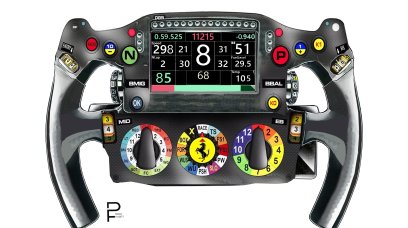A fan-powered car - Brabham
The Brabham BT46B is better known by one very simple name - the fan car. Created by genius designer Gordan Murray in 1978, it won that year's Swedish Grand Prix - the only F1 race it ever entered. Niki Lauda was the driver responsible for its maiden victory, although the Austrian has since described how tricky the car was to corner. The fan was a fresh take on ground effect, which we'll go on to discuss later in the list. Naturally, as the chief architect of ground effect, Champman was outraged by the innovation, as it shrunk the advantage of his own Lotus 78 design. Rivals were simultaneously impressed and outraged by the innovation, with Brabham, then led by Bernie Ecclestone, succumbing to political pressure and withdrawing it for good.
Ground effect pioneer - Lotus
Before the fan car, there was the legendary Lotus 78, a car that revolutionized F1 forever. Colin Chapman, founder of the Lotus F1 team, was one of the most extraordinary innovators of his time, with his biggest contribution to motorsport being the first-ever ground effect car. Ground effect consisted of using the floor of the car to create even more downforce, and overnight, it profoundly changed the shape and look of F1. The first chassis to feature this innovation was the Lotus 78, while its successor, the Lotus 79, would eventually carry Mario Andretti to his only F1 title in 1978. Cars mirroring that of the Lotus 78 would go on to dominate F1 until the ground effect concept was banned in the early 1980s, as the sport's organizers were concerned by the potential for cars to literally take off. Chapman's legacy lives on, however, as the 2022 regulation changes will see F1 cars take advantage of ground effect elements once again.
Active suspension - Williams
Over the past 30 years, F1 teams have progressively been introducing more sophisticated technologies into the sport in order to gain a crucial advantage. However, unlike most other F1 innovations, the FW16B thrust the sport into a whole new era and fundamentally changed what it meant to be an F1 driver. The project to create the car involved such F1 luminaries as Adrian Newey, Paddy Lowe and Patrick Head, in what was one of the most remarkable feats of engineering we've ever seen. The FW16B, created for the 1992 season, was the first car of its kind to feature an active suspension and other computerised additions, such as an automatic gearbox and traction control. Active suspension was light years ahead of its time, as it meant the car's suspension could be automatically adjusted through each corner. Unsurprisingly, Nigel Mansell won the 1992 world title driving the Williams creation, which made rival cars on the grid look primitive by comparison.
IU6df2u0T1k
https://youtu.be/IU6df2u0T1k
Double diffuser - Brawn, Williams, Toyota
It divided the sport in 2009, but it's fair to say that without the notorious double diffuser, we never would have witnessed one of Formula 1's most beloved Cinderella stories. While Williams and Toyota both integrated a double diffuser into their respective chassis, it was Brawn GP who harnessed it best. Out of the ashes of the Honda F1 team, Brawn GP was formed, as the Japanese manufacturer reeled from the impact of the 2008 financial crisis. The team was essentially gifted a Mercedes engine and inherited a pretty decent chassis from Honda, who had planned to compete in 2009 - before the decision was taken to leave F1. One such innovation that Honda helped pioneer was the fabled double diffuser, which gave the team a huge advantage over the rest of the field. Brawn GP and Jenson Button would win six of the first seven races, and by the time the rest of the pack had caught up, sporting their own versions of the concept, both world titles were all but sealed by the Brackley-based team.
Tuned Mass damper - Renault
Despite helping power Renault to two consecutive world titles, the mass damper must surely go down as one of the most overlooked inventions in F1 history. It was a stroke of genius from the team, one that profoundly altered the car's ride and stability - even if didn't look particularly dramatic to onlookers. Created by the team's head of R&D, Dr. Robin Tuluie, it improved the car's performance by dampening out tyre bounding frequency throughout corners - thereby keeping grip levels more consistent. It had limited usage in the 2005 season, but for 2006, the tuned mass damper stayed on the car for the first half of Fernando Alonso's triumphant campaign, helping him and the team to seal back to back world titles. Unlike other cheeky F1 inventions, it wasn't immediately outlawed once discovered, as many teams attempted to create their own variation - but none had quite the same effect as Renault's ingenious creation. After the summer break in 2006, the FIA finally stepped in, and banned mass dampers altogether.
6G4SXmDdFbg
https://youtu.be/6G4SXmDdFbg
Most read






